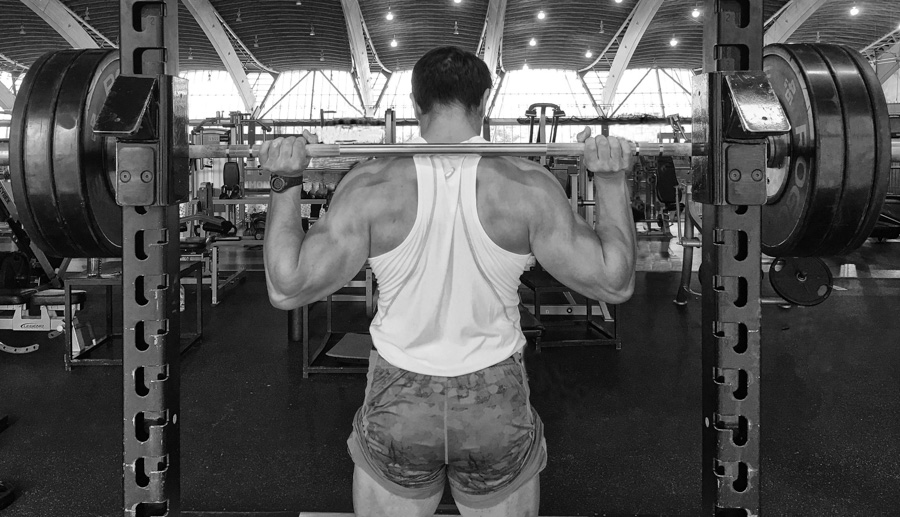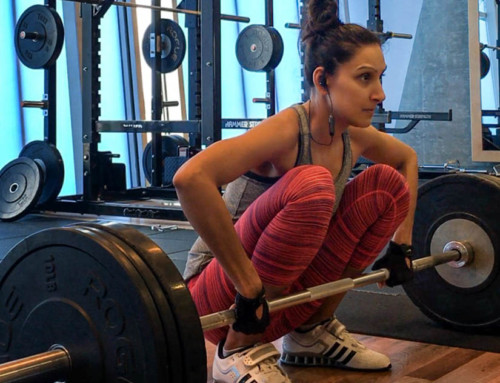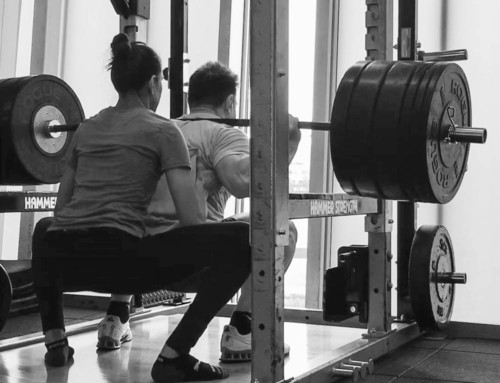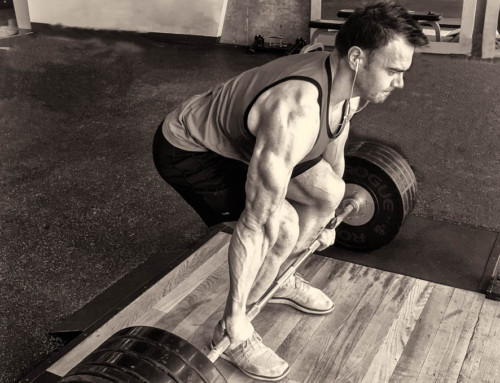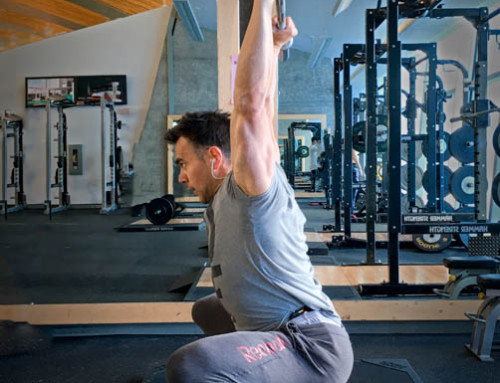In our earlier post on the Energy Systems series, we discussed Metabolic Energy Basics – availability and storage. Here we focus on the three energy systems – when and how they are utilized towards ATP production.
ATP is a molecule that is used as energy within cells. We often have a notion that ATP is used only to produce muscular force, but ATP’s application is significantly larger. ATP is a transport molecule of energy, moving around inside the cell. It is hydrolyzed (breakdown) by ATPase (enzyme) and used for all kinds of tasks including:
- transport of molecules and ions by activating cell membrane enzymes
- maintaining cell volume through osmosis
- activating anabolic processes including synthesis of proteins and genetic material (DNA and RNA)
- used in fat and glucose metabolism
- cell communication through enzymes (protein kinases)
Power those Muscles
For the purpose of this article, we’ll concentrate on energy for physical activity – muscular contraction. Physical activity is fuelled by converting high energy adenosine triphosphate – ATP, to lower energy adenosine diphosphate – ADP, producing energy and heat in the process. This process requires water and is ongoing during physical activity as well as rest.
ATP + H2O —> ADP + Pi + H+ + energy + heat.
Since our muscles don’t store much ATP, we must constantly resynthesize it (put it back together). Hydrolysis and resynthesis of ATP is thus a circular process; ATP is hydrolyzed into ADP and Pi, and then ADP and Pi combine to make ATP.
For physical activity, energy is used in form of ATP by binding it to contractile producing protein Myosin head (protein part of thick filament). By cleaving Pi from ATP, energy is released generating a slight pull of actin filament over myosin within a sarcomere, thus shortening it. Hundreds of thousands of such tiny movements within muscle fibers generate shortening of this fiber, resulting in a contraction.
It’s about Intensity and Speed
Humans produce ATP through three metabolic pathways that consist of many enzyme-catalyzed chemical reactions. The pathway chosen to produce ATP, depends on how quickly and how much energy is needed. For example, lifting heavy sub-maximal loads of 1RM and above, sprinting, or jumping as high or as far as you can, requires immediate energy. ATP stored in muscle is utilized to produce instant power demand in order to complete such physically intense set. On another side of the spectrum, consistent physical stimulus such as jogging does not require immediate energy demand. ATP reserves are still engaged and used by the muscles but in a coordination of all energy systems contributing in different stages and degrees.
Power of Energy Systems
The three energy systems involved in production of ATP are:
1. Anaerobic Alactic (ATP-CP) System, aka Phosphagen System
Intense, short duration physical activities require muscles to produce instantaneous power, creating a high demand for ATP. As ATP reserves rapidly deplete during such physical efforts, the body engages in methods to replenish used up energy. ATP-CP is the fastest and simplest way to resythesize (put back together) ATP. Creatine phosphate (CP) is a large transport molecule which is stored in skeletal muscles. It donates it’s phosphate group (Pi) to ADP producing ATP:
ADP + CP —> ATP + C.
The reaction is very simple and depends solely on stored CP within muscle cells. The process does not need oxygen to resynthesize ATP, and thus referred to as anaerobic, or oxygen-independent.
The ATP-CP system, is the fastest and a major energy contributor for all-out exercise lasting up to about 10 seconds. However, due to limited CP and ATP stores within skeletal muscles, such intensity can not be kept up as fatigue rapidly sets in. Track and field events like shot put, javelin throwing, 100-sprint and hurdles, as well as Olympic weightlifting are examples of sports that quickly generate and utilize large amount of power. Depleted ATP levels require three to ten minutes of rest to be replenished, even at elite athlete level.
With age, the body begins to lose some of its abilities including exerting strength at speed. This affects the ATP-CP system as well as ATP and CP reserves within muscle tissue. ATP-CP training is the best way to increase strength, speed and power by engaging exercises consisting of dynamic movements. Most of these exercises are also sport-specific with benefits that carry over into developing other biomotor abilities. Performing such exercises near maximum effort lasting up to 15 seconds coupled with generous rest periods, to generate near full recovery, is the training method recommended by most coaches.
2. Anaerobic Lactic System, aka Glycolysis or Glycolytic System
Most physical activity lasts longer than 15 seconds, and with continuous energy demands the body switches fuel sources to sugars. Glycolysis is the predominant energy system used for all-out exercise lasting from 30 seconds to about 2 minutes and is the second-fastest way to resynthesize ATP. During glycolysis, carbohydrates – in the form of either blood glucose (sugar) or muscle glycogen (the stored form of glucose molecules connected to one another) – are broken down through a series of chemical reactions to form pyruvate (a three carbon molecule). Pyruvate is a multipurpose platform that can be used in various reactions constructing different compounds such as Acetyl-CoA, amino acids, lactate and several forms of energy (ATP being one of them). Glycolysis of one glucose yields two ATP molecules. Even though glycolysis does not generate a lot of energy, it does so very quickly.
Depending on energy demands, pyruvate (intermediate molecule) can continue in one of two ways:
- conversion to lactate (glycolysis), or
- conversion to acetyl coenzyme A (acetyl-CoA – another metabolic intermediary molecule), which enters the mitochondria for production of more ATP via oxidative system.
Conversion of pyruvate to lactate occurs when the demand for oxygen is greater than the supply (i.e. during anaerobic exercise). Conversely, when enough oxygen is available to meet muscle’s needs (i.e. during aerobic exercise), pyruvate (via acetyl-CoA) enters the mitochondria and goes through aerobic metabolism.
Though glycolysis system is able to rapidly generate energy, it can not sustain it for very long. Without oxygen, glycolysis pathway generates metabolite byproducts including ADP, Pi, potassium and hydrogen ions. Increase in hydrogen ions leads to more acidic conditions within muscle cells, decreasing pH levels – a condition called acidosis. Acidosis and the accumulation of other metabolites increases fatigue causing decreased contractibility within sarcomeres.
Training anaerobic lactic system has numerous benefits including greater ability to handle acidosis, faster recovery, and improved muscular strength and endurance, within medium to high intensity exercises.
Anaerobic Lactic system can and should be trained. The more you train your glycolytic system, the more effectively your body handles acidosis, buffering these ions and recovering faster between sets of medium-to-high-intensity exercise. Discomfort that comes from glycolytic training is worth the effort as these type of protocols are most effective in building lean body mass while burning fat. Common training methods involving anaerobic lactic system is through repeated high effort intervals. Performing HIIT (High Intensity Interval Training) style programs with work periods lasting 20 to 40 seconds engages sugar metabolism as a major energy contributor. Depending on the goals of endurance or strength, HIIT training may be modified and exercises substituted more towards cardiovascular or free weight sessions, with rest periods ranging from one to two minutes in duration.
3. Aerobic System, aka Oxidative Energy System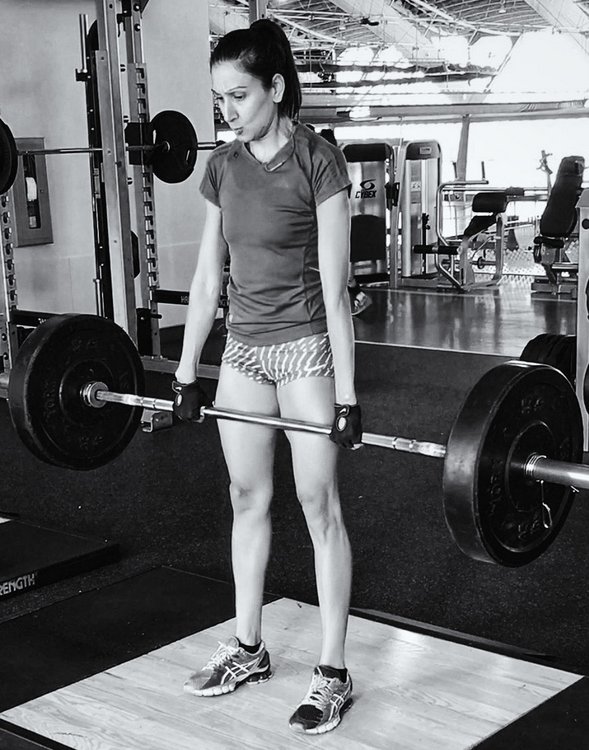
Since humans evolved for aerobic activities, it’s not surprising that the aerobic system, which is dependent on oxygen, is the most complex of the three energy systems. We can survive weeks without food, days without water, but only minutes without air (oxygen). The metabolic reactions that take place in the presence of oxygen are responsible for most of the cellular energy produced by the body. Aerobic metabolism is the slowest way to resynthesize ATP but when it does, it produces the most energy molecules than the other two systems combined.
The aerobic system – which includes the Krebs cycle (also called the citric acid cycle or TCA cycle) and the electron transport chain – uses sugars and fats to produce ATP. These can come from digested food absorbed into bloodstream, or fuel reservoirs (glycogen or adipose tissue). ATP is produced through series of biochemical enzymatic reactions. As discussed before, sugars whether blood glucose or glycogen are broken down through glycolysis into pyruvate, which forms acetyl-CoA as it crosses into mitochondrion before entering Krebs cycle. Inside, acetyl-CoA is used to produce carbon dioxide, ATP, hydrogen ion (protons) and electrons. The hydrogen ions (protons) and electrons are carried by electron transport chain to oxidative phosphorylation pathway producing more ATP and water. A conversion of single glucose molecule through oxidative system (Krebs cycle and electron transport chain / oxidative phosphorylation) produces 36 molecules of ATP. This translates to 18 time more available energy produced by oxidative system compared to anaerobic glycolysis from a single glucose.
Fat packs double the energy potential averaging 9 kcal (37kJ) from each gram of fatty acid, compared to 4 kcal (17 kJ) for one gram of sugar (carbohydrate). Fat is stored in adipose tissue in form of triglycerides and located underneath the skin, around organs or in lipid pockets within skeletal muscles (referred to intramuscular triglycerides). Triglycerides are mobilized and broken down (through process called lipolysis) into glycerol backbone and free fatty acids (FFAs) which are made from long chain of carbon atoms. FFAs get into the bloodstream and transported to muscle cells and then into mitochondria. Inside mitochondria, carbon atoms from FFAs are cleaved off to produce acetyl-CoA (via process called beta-oxidation). The acetyl-CoA from fat oxidation is the same as the one from glucose oxidation, it is then fed into Krebs cycle following the same biochemical pathways. Oxidized FFAs produce even more ATP, as it produces far more acetyl-CoA. For example, palmitate fatty acid produces 129 ATP molecules.
Physical activity and sports of longer duration greatly depend on oxidative system as a major energy contributor. Athletes in sports such as triathlons, basketball, and long distance swimming have well developed aerobic capacity. Aerobic system is responsive to exercise and can be trained in number of ways. This is the slowest system to generate energy, however as time goes on, it becomes the major contributor in ATP resynthesis. For example, in a 10-second sprint aerobic system contributes about 13% of necessary energy, but on an intense four-minute run, that figure rises to 80%.
Aerobic system improves with almost every type of protocol, from long cardiovascular sessions, to high intensity weight training bouts. As lengthy runs improve overall oxygen uptake through VO2max, heavy weight, or HIIT style methods engage aerobic system during and post exercise. Research shows, aerobic system engaging as an energy contributor earlier than originally believed, producing equal energy supplies around 70-second mark of continuous exercise. This places aerobic system as a significant participant in all types of training protocols including anaerobic conditions of sub-maximal strength or power efforts.
An effective oxidative system is not only good at utilizing sugar and fat as fuel, but also switching between these substrates quickly and effectively in order to continue generating energy on demand (metabolic flexibility). This includes utilizing available glucose and FFAs in bloodstream through diet, or adipose and glycogen storages.
Final Thoughts
The body uses ATP as the ultimate energy package to perform all cellular actions, including muscular contractions producing movement and balance. Due to continuous energy demands ATP needs to be resynthesized (put back together). Based on energy demands, the body resynthesizes ATP through three systems: Anaerobic Alactic (ATP-CP), Anaerobic Lactic (Glycolysis), and Aerobic (Oxidative). ATP-CP is the fastest system producing instant energy, but only sustainable within 10 seconds of high intensity physical bout. Glycolysis is the second fastest method of producing energy contributing for up to two minutes in duration. Aerobic system is the slowest, most complex and the largest energy producing method capable of utilizing both sugar and fat depending on body requirements. In all, all three systems work in conjunction with one another simultaneously providing smooth levels of energy necessary for any type of physical engagement. For Periodized Training Routines structured around Energy Systems please learn more about our Stronger Leaner Faster Books.

